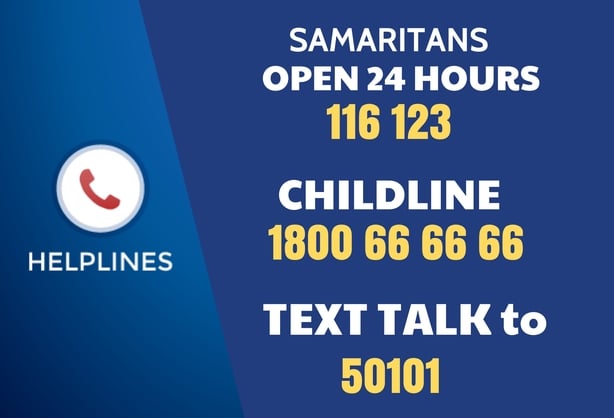A number of children in Ireland were among the victims of a serial sex offender in the United States, who groomed and abused hundreds of children over the internet, RTÉ's This Week has learned.
US law enforcement officials confirmed to RTÉ that as many as four, and possibly more, children in Ireland were among the victims of the man, who in some cases manipulated his victims into abusing younger children or engaging in acts with animals.
American businessman Blake Robert Johnston, 42, was sentenced last year in a court in California to 30 years in prison for travelling across state lines in the US with the intent to engage in sexual acts with a minor.
However, searches at his property in Martinez, California, also uncovered a massive volume of material relating to children who he had groomed and abused, over the internet, both in the US and in a number of other countries including Ireland.
Johnston first came to police attention when a woman's 14-year-old daughter went missing.
We need your consent to load this rte-player contentWe use rte-player to manage extra content that can set cookies on your device and collect data about your activity. Please review their details and accept them to load the content.Manage Preferences
The woman passed her child's mobile phone to police for examination and they discovered the girl had received multiple calls from an unidentified number, which police traced to Johnston.
Within 24 hours of the victim's disappearance, Martinez police found the missing girl in Johnston's home.
He was later convicted for sex offences relating to this child and two others who lived in the US.
According to documents filed by the US Attorney's office for Northern California, a hard drive seized from Johnston's bedroom contained more than 500 folders labeled with different girls names.
The majority of those 500 folders each appeared to contain images and videos of child abuse which no law enforcement investigators had previously encountered - suggesting they were all victims who Johnston had encountered and groomed personally.
At their latest count, US law enforcement investigators had identified 94 minor victims, from at least 30 states and six countries - including Ireland, the UK, Australia and Malaysia - who Johnston had lured into creating child pornography or sexually exploited online.
Gardaí later played a role in the investigation into Johnston's activities, alongside a number of international police agencies and US Homeland Security, with the latter agency leading the probe.
Gardaí did not respond to a request for comment on the case, nor did the lawyers representing Johnston.
The US Attorney's office for Northern California said it was presently considering whether it could provide further detail on the case in terms of updates on the number of identified victims.
Last week, the attorney's office told RTÉ that at their latest count four of Johnston's victims were children based in Ireland.
One child was based in Dublin, one in Meath, one whose exact location in Ireland had not been identified, and one child who moved between Ireland and another jurisdiction when the abuse occurred.
Due to the clandestine and covert nature of Johnston's internet use, and the fact that he deleted material and encouraged children to do so too, many children were identified using traditional investigative means such as crests on school uniforms or other items on display in the background of videos or photos.
Johnston told the police under questioning that he contacted children using messaging apps and websites, including OoVoo - described as being similar to Skype; Kik - which is a secure messenger app that protects users from intrusion; and Omegle - which is a website designed to allow strangers to talk to other strangers anonymously.
There was no suggestion in the court documents that the technology companies behind these websites or apps were in any way complicit in their misuse.
None of the child victims of Johnston's internet abuse were required to give evidence to the US court and prosecutors told the judge that they had limited the sample of cases on which he was charged to spare what would otherwise have been a large number of child victims the distress of having to give evidence in court.
The US Homeland Security Investigations agency, which conducted the investigation into Johnston's activities, said at the time of his conviction that they believed hundreds of his victims had yet to be identified.
According to court documents in the case, the US Attorney for Northern California told the court that Johnston was "enticing minor victims over the internet by at least December 2011".
"The defendant was sophisticated at enticing young girls over the internet to engage in illicit sexually explicit conduct at his direction and then captured this conduct personally or directed the victims to record the images," the documents noted.
"To date, the government has identified 94 minor victims who were enticed online by the defendant to engage in sexual activity, ranging in age from as young as 12 years … and coming from 32 US states and six different countries.
"There are more than 86 collateral requests still outstanding, and the government expects to issue more requests as victim identifying information becomes available.
"Not only is the breadth of defendant's criminal activities an aggravating factor, but the violence and depravity exhibited in these interactions is as well.
The prosecutors’ submission said that Johnston had "targeted emotionally vulnerable girls and those lacking in self-esteem and then manipulated them for his own pleasure".
"As the father of a young teenage girl himself, the defendant well knew how easy it is to manipulate these young girls. The defendant acted friendly and interested in the victims, telling them how beautiful they were, and professing his love for them, creating a bond. Then he quickly turned the conversation to a sexual one."


